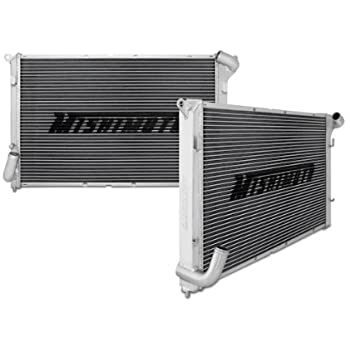
Our mission is to empower readers with the most factual and reliable financial information possible to help them make informed decisions for their individual needs. Our writing and editorial staff are a team of experts holding advanced financial designations and have written for most major financial media publications. Our work has been directly cited by organizations including Entrepreneur, Business Insider, Investopedia, Forbes, CNBC, and many others.
- MRP II was supported by an better IT infrastructure that assist on the development of a cross-functional system.
- In 1913, American production engineer Ford Whitman Harris developed the calculation known as economic order quantity, the amount that minimizes the cost of ordering and storing a good.
- Net requirements represent the actual amount of materials or components required for production, taking into account current inventory levels and scheduled receipts.
- This approach enables manufacturers to identify and address discrepancies between planned and actual production, resulting in improved accuracy and responsiveness to changing conditions.
- The Bill of Materials is a comprehensive list of all raw materials, components, and sub-assemblies needed to produce a finished product.
Closed loop reporting (CLR) is a system in which data and information collected by marketing and sales professionals is made available to both teams. By leveraging the cloud, manufacturers can access their MRP systems from anywhere and easily scale resources to meet changing demands. Modern MRP systems are often integrated with other enterprise systems, such as Enterprise Resource Planning (ERP) and Supply Chain Management (SCM) systems. It may turn out that insufficient time was allowed within the MRP schedule for the individual operations to be completed.
Ask a Financial Professional Any Question
Closed loop MRP systems are viewed as second-age systems, and have since been displaced by manufacturing resource planning and enterprise resource planning systems. IIoT is the general term for the proliferation of inexpensive, smart, connected sensors and devices that can be used to monitor and control virtually anything and everything throughout the entire supply chain. IIoT brings vastly greater quantities of data into the planning systems that feed the AI and machine learning engines. A modern MRP system is a tightly integrated closed-loop system that encompasses the entire enterprise. It tracks all activity and continuously interacts with closed loop mrp means planning and scheduling systems to keep everything in line – helping the business stay focused on fulfilling customer promises and expectations.
It is important for businesses to carefully evaluate their needs and consider the potential benefits and drawbacks before deciding to invest in an ERP system. Overall, an ERP system can be a valuable tool for businesses looking to improve their operations and stay competitive in a rapidly evolving marketplace. The ERP connects right from Product Life Cycle Management, human resource, supplier management, logisitics, along with modules that existed as part of MRP-II systems. The seamless interconnection and feedback mechanism helps identify various demand requirements and supply side constraints. Bolt-on-modules that co-work along with ERP systems that were not present in initial implementation provides flexibility as the customer requirement and need changes. MRP systems require regular updates and adjustments to reflect changes in production schedules, demand, inventory levels, and other factors.

The major suppliers of ERP software systems include Oracle (ORCL), Systemanalyse Programmentwicklung (SAP), Microsoft (MSFT), Sage, and Netsuite with the latter two specializing in systems designed to meet the needs of medium-sized companies. ERP quickly expanded to other industries, including services, banking and retail, that did not need an MRP component. A financial professional will offer guidance based on the information provided and offer a no-obligation call to better understand your situation. As manufacturing continues to evolve through advancements in technology and changing market demands, MRP systems will need to adapt to remain effective. The integration of artificial intelligence (AI) and machine learning technologies into MRP systems has the potential to significantly enhance their capabilities.
#SAP – ABC Indicator or Physical inventory indicator for cycle counting
MRP systems help manufacturers maintain optimal inventory levels by accurately forecasting material requirements and coordinating production and purchasing activities. This leads to reduced carrying costs, minimized stockouts, and a more efficient use of warehouse space. It uses the MPS, BOM, and inventory data to generate production and purchasing schedules, helping manufacturers optimize their inventory management and production processes. By providing a detailed production plan, MRP systems enable manufacturers to optimize the use of resources, reduce setup times, and minimize production delays. This results in increased productivity, reduced lead times, and a more efficient manufacturing process.
By accurately forecasting material requirements and optimizing production schedules, MRP systems help manufacturers minimize the occurrence of stockouts and excess inventory. It takes into account the lead times and net requirements of each item, ensuring that orders are placed in a timely manner to meet production schedules without causing excess inventory. MRP aims to streamline the manufacturing process by coordinating production schedules, material purchasing, and inventory management.
Definition of Closed-loop MRP Closed-loop Material Requirements Planning Gartner Information Technology Glossary
The articles and research support materials available on this site are educational and are not intended to be investment or tax advice. All such information is provided solely for convenience purposes only and all users thereof should be guided accordingly. By incorporating real-time data and advanced analytics, modern MRP systems can offer improved accuracy and adaptability in the face of changing manufacturing environments. These costs include software and hardware investments, employee training, and ongoing system maintenance, which may present financial challenges for some organizations.
This helps prevent production delays and stockouts while also enabling manufacturers to take advantage of volume discounts and favorable payment terms. MRP systems facilitate better communication and coordination between manufacturers and suppliers, ensuring that materials are purchased and delivered in a timely manner. These updates ensure the accuracy and effectiveness of the MRP system, enabling manufacturers to adapt to changing conditions and maintain optimal inventory levels. TPOP is a technique used in MRP systems to determine when orders for materials or components should be placed. Gross requirements refer to the total quantity of materials or components needed to fulfill the Master Production Schedule. These records inform the MRP system of the current stock levels and help identify any potential shortages or surpluses that may arise during the production process.
Disadvantages of MRP
This can result in inaccurate production plans and inventory levels, leading to stockouts or excess inventory. Net requirements represent the actual amount of materials or components required for production, taking into account current inventory levels and scheduled receipts. MRP II was supported by an better IT infrastructure that assist on the development of a cross-functional system. For Apics, MRP II integrates business processes and software application and heightens the involvement of key functions such as production, marketing , and finance in the Manufacturing Planning and control process. In the sixties, customers became demanding, competition became tougher and the interest rates began to increase. This made organizations to realize the necessity to develop a much better response to the customer needs.
Because their market success is highly dependent on their material planning, production, and inventory management abilities. MRP is a system that controls inventory levels, plans production, helps supply management with important information, and helps with the manufacturing control system with respect to the production of assembled parts. In the 1960s, manufacturing planning systems focused primarily on traditional inventory control issues (when to order, how much to order, etc.). These systems translated the approved master production schedule of final products into time-phased net requirements for subassemblies and final assemblies for manufacturing and components and raw materials for purchasing. MRP II is a computer-based system that can create detailed production schedules using real-time data to coordinate the arrival of component materials with machine and labor availability. MRP II is used widely by itself, but it’s also used as a module of more extensive enterprise resource planning systems.
Mechanisms of circular RNA degradation Communications Biology – Nature.com
Mechanisms of circular RNA degradation Communications Biology.
Posted: Fri, 09 Dec 2022 08:00:00 GMT [source]
It typically ranges from a few weeks to several months, depending on the complexity and lead times of the manufacturing process. ERP is most frequently used in the context of software, with many large applications having been developed to help companies implement ERP. Because they have a feedback feature, closed loop systems also help the manufacturer incorporate the return process into their manufacturing loop. In this context, “returns” refers to products that are sent back by individual customers and retail channels as well as returns made from the quality process back to the manufacturing floor.
Case, a manufacturer of tractor, and construction machinery, worked with IBM to develop what is believed to be the first MRP system. MRP systems of 1960’s was used for tracking inventories that facilated placing raw material procurement. CLR makes it possible to identify particular lead sources and prospects with revenue generation.

The core of MRP system was level-by-level bill of material explosion (the term explosion refers to the fact that one requirement at the higher leads to a multitude of lower level requirements). MRP can also make the later stages of production, such as assembly and packaging, proceed more smoothly and predictably by removing most of the uncertainty over inventory and minimizing the time needed to manage it. The inventory items in the BOM are classified as either independent demand or dependent demand. Manufacturers determine its amount by considering confirmed orders and examining market conditions, past sales and other indicators to create a forecast, then decide how many to make to meet the expected demand. The BOM is a hierarchical list of all the materials, subassemblies and other components needed to make a product, along with their quantities, each usually shown in a parent-child relationship.
In the previous MRP systems, customer service was measured by such factors as percent shipped on time or average days late on past due orders. MRP — II systems defined it as the ability of the company to meet the total needs of the customer. The goal is continuous customer satisfaction not only with the product but also with the company. This can be accompolished not only by meeting the basic requirement of a product with adequate quality, on-time delivery, and reasonable pricing but also by working with customer to assist in meeting the marketplace demand of the customer. Key trends shaping the future of MRP include increased integration with other enterprise systems, the incorporation of AI and machine learning technologies, and the adoption of cloud-based solutions.
In fact, they are considered by many practitioners to be antithetical, though some say MRP can help with lean production. Without a way to automate the complex calculations and data management of MRP processes, it is unlikely that individual manufacturers could have scaled up operations as rapidly as they have in the half century since MRP software arrived. MRP systems provide manufacturers with insights into capacity requirements, enabling better allocation of resources and more accurate scheduling of production activities. Closed-loop MRP refers to an MRP system that incorporates feedback mechanisms to continuously monitor and adjust production plans based on actual performance. MRP is an significant business processes in Manufacturing Planning and control and initially the MRP systems were focus on materials used in the manufacturing process. MRP is an significant business processes in Manufacturing Planning and control and initially the MRP systems were focused on materials used in the manufacturing process.
Enterprise resource planning is software used by a company to manage key parts of operations, including accounting and resource management. Material requirements planning is a software-based integrated inventory and supply management system designed for businesses. MRP is essential to the efficiency, effectiveness and ultimately the profitability of a manufacturing operation. They synchronize the purchasing or materials procurement plans with the master production schedule. The approach was popularized in the West by the bookThe Machine That Changed the Worldby Womack, Jones, and Roos .
Material requirements planning is a system that helps manufacturers plan and control their inventory, production, and purchasing activities. It is based on the idea of matching the demand for finished goods with the supply of raw materials and components. However, MRP has some limitations and challenges that can affect its performance and accuracy. Small companies in the manufacturing or production sectors can use Closed-Loop MPR to rush orders, improve lead times, and better manage their inventories. Closed-loop MPR can also optimize master production schedules and support capacity planning requirements.
The evolution to ERP systems occurred in the 90’s by the availability of new and even better information technologies, faster processing speeds, and powerful data base applications. In assembling building, closed loop mrp means process format is a structure for the floor plan of a plant which means to improve effectiveness … The vision about what is need of the customer and what should be done to achieve it must be very clear.
